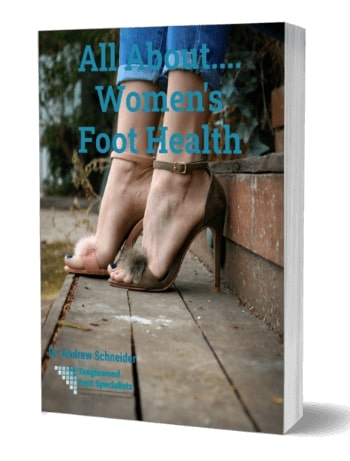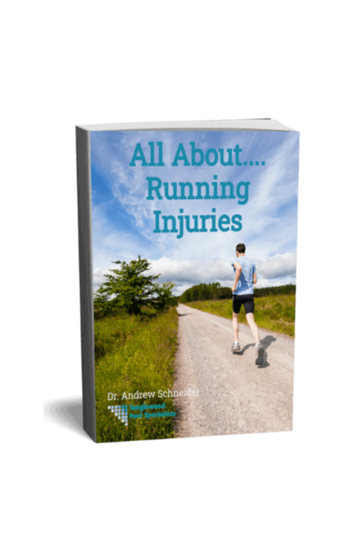The pain of a foot cramp can be surprisingly overwhelming. And that's especially true since the pain isn’t usually the result of any type of foot injury or problem. Instead, it's tied to uncomfortable, painful spasming of the muscles in your feet.
Now, you'll usually get foot cramps in the arches of your feet, on top of your feet, or around your toes. While cramps aren't a serious medical problem, they can be debilitating. In fact, a bad cramp limits your mobility and can even temporarily freeze your foot muscles! So learning to find pain relief quickly could make a major difference.
What do Foot Cramps Feel Like? ![holding foot in pain from foot cramp]()
Muscle cramps in your feet feel like intense contractions. As I said, they're most common in the arches of your feet or toes. But the key issue is that you can't control these contractions--either how they feel or how long they last. In fact, the muscle contractions can last for several seconds or minutes. And while they're happening, you'll feel intense tightening of the muscle. There may also be pain, and a sharp or deep aching sensation. Luckily, the pain tends to subside when the muscle contractions relax as the cramps go away.
Now, most foot cramps aren’t a cause for concern. Usually, you can treat them quickly and at home. (I'll tell you how in a minute.) But if your foot cramps become a chronic problem, it's important to come in and talk about it with me right away.
Foot Cramps Causes
Why do we get foot cramps? There are several different reasons why foot cramps develop. These are the most common ones:
1. Muscle fatigue or stress.
2. Tight shoes or shoe laces
3. Poor circulation, malnutrition or vitamin D deficiency.
4. Obesity, diabetes, flat feet and/or hormonal imbalances.
5. Dehydration, thyroid gland malfunction, or a pinched nerve.
Now let's take a closer look at some of the foot cramps causes you might experience.
Overdoing it at the gym or on the job
If you stand or work out for too long, your foot and leg muscles will tire. Then, if you push through without a break? You may get a foot cramp, while you're moving or when you finally take a rest.
Choosing the Wrong Footwear
Rocking your high heels all day can put your feet in funny positions that lead to foot cramps. But the same is true if you wear flat-soled shoes. Because both styles are short on arch support for your feet. And that can strain the supporting muscles in your arches, wearing them out and eventually leading to foot cramps.
Illness and loss of electrolytes
If you lose too many electrolytes, your body's nerve and muscle functions will be impacted. This can happen if you've lost too much fluid, by working out for too long in the hot Houston sun without hydration. But prolonged diarrhea and certain liver or kidney conditions can also throw off your electrolytes. In turn, you may develop foot cramps and other unpleasant symptoms.
Endocrine Concerns
Your hormones can also impact electrolyte levels. So conditions that throw off your hormonal balance can leave your electrolytes out of whack. At that point, you could develop muscle cramps in your feet and elsewhere. Common disorders that lead to muscle cramps include an over or under active thyroid, type II diabetes, and disorders of your adrenal glands.
Nerve or Vascular Damage
If you have peripheral neuropathy or a compressed nerve, foot cramps could cause you trouble. Also, if PAD or peripheral vascular disease damages your blood vessels, foot cramps could follow. Why? These conditions reduce the amount of oxygen reaching your feet. When that happens, physical activity will wear your feet out at a faster rate. In turn, you may develop leg or foot cramps.
Medications
Of course, some medications also cause foot cramps. That's especially (but not only) for diuretics. So you may need to speak with your doctor if you believe that your foot cramps are being induced by medication.
Foot Cramps Causes: Finding Pain Relief ![foot receiving a massage]()
If, however, your cramp is just a run-of-the-mill pain in your foot, here are the 3 steps you need to take in order to get your foot feeling better:
- Pull the toes upward (if toes are cramping)
- Pull your foot in the opposite direction of the cramp
- Put direct pressure on the cramp
If none of these tips seem to do the trick, place a warm compress on your foot to increase pressure and boost blood flow to the trouble spot.
Once the cramp is gone, drink some lightly-salted water and grab a magnesium-rich snack like a banana—the salt and magnesium both have cramp-fighting properties.
Preventing Future Foot Cramps Causes
Want to stave off future cramps? Here are a few things you can try:
1. Warm up and cool down before and after exercising.
2. Stay on top of your water intake.
3. Eat food with lots of potassium and calcium like bananas, milk, yogurt, cheese, fish, fresh veggies and dark chocolate.
4. Give your feet a rub whenever you get a chance.
5. Wear comfortable, well-fitted shoes to keep the pressure off your feet.
6. Try to build up strength in your foot and ankle muscles
7. Avoid long periods on your feet
8. Give your feet a good rub down at the end of a long day to keep them loose.
9. A nice soak in a warm tub with Epsom salts could also ease muscle tension
10. Reach and maintain a healthy weight to take pressure off your feet.
11. Consider wearing a night splint if your muscles tighten up while you sleep.
Remember, while foot cramps cause intense contractions and plenty of pain, they're usually short lived. Most often, you can get rid of the pain with the stretches I just shared. But if foot cramps become a regular problem, that could be a sign of a bigger problem. So I recommend scheduling an appointment in the office so we can get to the root of your foot cramps causes. And get you lasting pain relief.





















